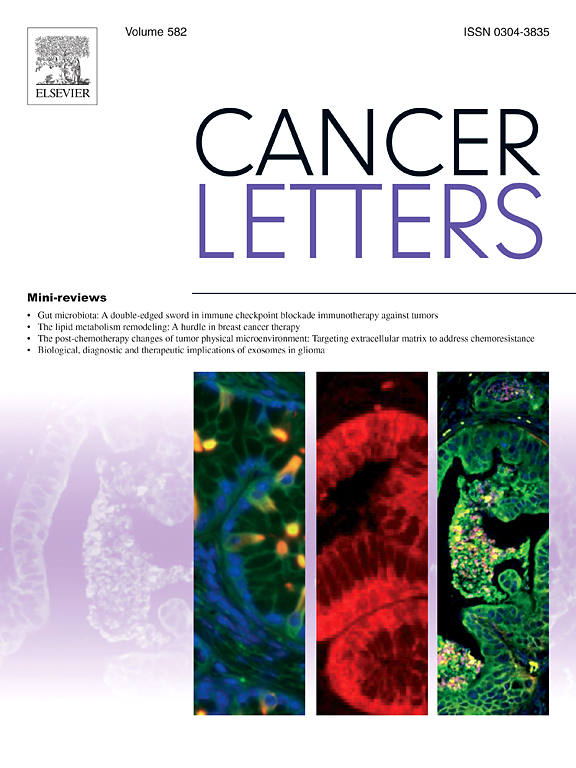Allogeneic versus autologous hematopoietic stem cell transplantation for adult T-lymphoblastic lymphoma: A real-world multicenter analysis in China
IF 9.1
1区 医学
Q1 ONCOLOGY
引用次数: 0
Abstract
Both allogeneic hematopoietic stem cell transplantation (allo-HSCT) and autologous HSCT (ASCT) are important consolidation therapies for T-lymphoblastic lymphoma (T-LBL). In this multicenter, real-world study, we aimed to compare the clinical outcomes between ASCT and allo-HSCT in adult T-LBL patients. 163 Ann Arbor stage III or IV T-LBL patients (>16 years) who achieved complete or partial response after induction chemotherapies and received HSCT across 11 transplant centers were enrolled. Patients with >25 % BM involvement or 5 % lymphoma cells in the peripheral blood at diagnosis were excluded. Landmark analyses were performed to assess outcomes within 1.5 years and between 1.5 years and 3 years after transplantation. The 3-year cumulative incidence of disease progression and non-relapse mortality (NRM) was 24.3 % versus 40.3 % (P = 0.04) and 14.6 % versus 7.1 % (P = 0.29), respectively, for allo-HSCT and ASCT group. The 3-year probability of progression-free survival (PFS) and overall survival (OS) after transplantation was 60.5 % versus 52.6 % (P = 0.34) and 65.8 % versus 61.8 % (P = 0.65), respectively, for allo-HSCT and ASCT group. In landmark analysis, allo-HSCT group showed a superior PFS to ASCT group at 1.5–3 years follow-up (P = 0.02). In conclusion, this large-scale real-world study showed that adults T-LBL patients might benefit more from allo-HSCT than ASCT.
同种异体与自体造血干细胞移植治疗成人t淋巴母细胞淋巴瘤:中国真实世界的多中心分析。
同种异体造血干细胞移植(alloo -HSCT)和自体造血干细胞移植(ASCT)都是治疗t淋巴母细胞淋巴瘤(T-LBL)的重要巩固疗法。在这项多中心、真实世界的研究中,我们旨在比较ASCT和同种异体造血干细胞移植治疗成人T-LBL患者的临床结果。在11个移植中心招募了163名在诱导化疗后获得完全或部分缓解并接受HSCT的Ann Arbor III期或IV期T-LBL患者(16岁)。排除诊断时外周血有> - 25% BM受累或5%淋巴瘤细胞的患者。采用里程碑式分析评估移植后1.5年内和1.5年至3年之间的结果。同种异体造血干细胞移植组和ASCT组的3年累积疾病进展发生率和非复发死亡率(NRM)分别为24.3%对40.3% (P=0.04)和14.6%对7.1% (P=0.29)。同种异体造血干细胞移植组和ASCT组移植后3年无进展生存(PFS)和总生存(OS)的概率分别为60.5%对52.6% (P=0.34)和65.8%对61.8% (P=0.65)。在里程碑分析中,在随访1.5 ~ 3年时,同种异体造血干细胞移植组的PFS优于ASCT组(P=0.02)。总之,这项大规模的现实世界研究表明,成人T-LBL患者可能从同种异体造血干细胞移植中比ASCT获益更多。
本文章由计算机程序翻译,如有差异,请以英文原文为准。
求助全文
约1分钟内获得全文
求助全文
来源期刊

Cancer letters
医学-肿瘤学
CiteScore
17.70
自引率
2.10%
发文量
427
审稿时长
15 days
期刊介绍:
Cancer Letters is a reputable international journal that serves as a platform for significant and original contributions in cancer research. The journal welcomes both full-length articles and Mini Reviews in the wide-ranging field of basic and translational oncology. Furthermore, it frequently presents Special Issues that shed light on current and topical areas in cancer research.
Cancer Letters is highly interested in various fundamental aspects that can cater to a diverse readership. These areas include the molecular genetics and cell biology of cancer, radiation biology, molecular pathology, hormones and cancer, viral oncology, metastasis, and chemoprevention. The journal actively focuses on experimental therapeutics, particularly the advancement of targeted therapies for personalized cancer medicine, such as metronomic chemotherapy.
By publishing groundbreaking research and promoting advancements in cancer treatments, Cancer Letters aims to actively contribute to the fight against cancer and the improvement of patient outcomes.
 求助内容:
求助内容: 应助结果提醒方式:
应助结果提醒方式:


